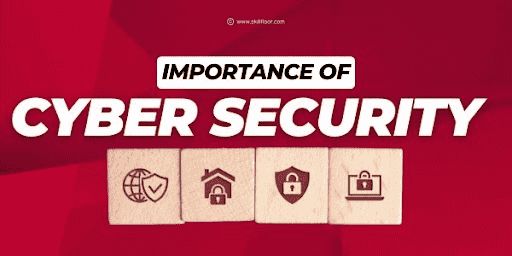Cybersecurity Framework: Building a Strong Defense in the Digital World
Stay ahead of cyber threats with our future-proof Cybersecurity Framework. Build a robust defense in the digital world. Protect your data today!

In today's interconnected world, cybersecurity has become a top priority for individuals and organizations alike. With cyber threats evolving rapidly, it's crucial to establish a solid cybersecurity framework to protect sensitive information and digital assets. In this blog, we'll explore the concept of a cybersecurity framework in a friendly and approachable manner. We'll delve into the key components and benefits of implementing a cybersecurity framework, helping you build a strong defense in the digital world.
Understanding the Cybersecurity Framework
A cybersecurity framework is a structured approach that outlines the processes, policies, and controls necessary to protect against cyber threats. It provides a comprehensive framework for managing cybersecurity risks and ensuring the confidentiality, integrity, and availability of critical information.
Identifying Assets and Assessing Risks
The first step in establishing a cybersecurity framework is identifying the assets that need protection. This includes systems, networks, data, and any other digital resources. Once the assets are identified, a risk assessment is conducted to identify potential vulnerabilities and threats, and to evaluate the potential impact of cyber incidents.
Establishing Policies and Procedures
A cybersecurity framework involves creating robust policies and procedures to guide cybersecurity practices. These policies outline the expected behaviors, responsibilities, and protocols for employees and stakeholders. Procedures provide step-by-step instructions for implementing security measures, incident response protocols, and risk mitigation strategies.
Implementing Security Controls
Security controls are measures put in place to protect against identified risks and vulnerabilities. These controls include network firewalls, encryption, access controls, intrusion detection systems, and regular software patching. The selection and implementation of security controls are guided by industry best practices and compliance requirements.
Continuous Monitoring and Improvement
Cybersecurity is an ongoing process, and a framework promotes continuous monitoring and improvement. Regular monitoring helps detect and respond to security incidents promptly. It involves monitoring network traffic, conducting vulnerability assessments, and analyzing system logs. The insights gained from monitoring are used to refine security controls and strengthen the overall cybersecurity posture.
Incident Response and Recovery
A cybersecurity framework includes plans and procedures for incident response and recovery. This involves establishing a dedicated incident response team, defining roles and responsibilities, and developing a detailed incident response plan. The plan outlines the steps to be taken in the event of a security incident, including containment, eradication, and recovery procedures.
Training and Awareness
A crucial aspect of a cybersecurity framework is ensuring that employees and stakeholders are trained on cybersecurity best practices. Regular training programs raise awareness about the latest threats, social engineering techniques, and proper security hygiene. By empowering individuals with the knowledge to identify and respond to cyber threats, organizations can strengthen their overall security posture.
Compliance and Regulatory Requirements
A cybersecurity framework helps organizations meet industry-specific compliance requirements, such as GDPR, HIPAA, or PCI DSS.By implementing a framework, organizations can demonstrate their commitment to security and compliance to clients, partners, and regulatory bodies.
Risk Management and Prioritization
A cybersecurity framework assists in identifying and assessing risks, allowing organizations to prioritize security efforts based on the level of risk and potential impact.It helps allocate resources effectively to address high-risk areas, minimizing the likelihood and impact of security incidents.
Consistency and Standardization
Implementing a framework provides consistency in security practices across an organization.Standardization ensures that security controls and procedures are applied uniformly, reducing the risk of errors and vulnerabilities.
Third-Party Assurance
A cybersecurity framework enables organizations to assess the security posture of third-party vendors and partners.It helps evaluate the security measures in place, ensuring that data and systems are protected throughout the supply chain.
Incident Response and Recovery
A framework includes guidelines for incident response and recovery, enabling organizations to effectively respond to and recover from security incidents.It outlines the steps to be taken, roles and responsibilities, and communication protocols during an incident, minimizing the impact and downtime.
Continuous Improvement
Cybersecurity frameworks promote a culture of continuous improvement by encouraging regular assessments, updates, and enhancements.Organizations can learn from security incidents and implement measures to prevent similar incidents in the future.
Stakeholder Trust and Reputation
Implementing a cybersecurity framework enhances stakeholder trust by demonstrating a commitment to protecting sensitive information.It safeguards an organization's reputation, ensuring that customer data and privacy are treated with the utmost importance.
Scalability and Adaptability
A cybersecurity framework can be scaled and adapted to accommodate the evolving needs of an organization.It allows for the inclusion of new technologies, business processes, and emerging threats, ensuring that the framework remains relevant over time.
Collaboration and Knowledge Sharing
Implementing a cybersecurity framework encourages collaboration and knowledge sharing within an organization.It facilitates cross-functional teams working together to address security challenges and share best practices, fostering a culture of collective responsibility.
Incident Prevention and Early Detection
A cybersecurity framework focuses on proactive measures to prevent security incidents before they occur.It emphasizes continuous monitoring, threat intelligence, and vulnerability assessments to detect and address potential threats at an early stage.
Cost-Effectiveness
By implementing a cybersecurity framework, organizations can optimize their security investments.It helps identify cost-effective security controls and measures that provide the most significant impact in mitigating risks and protecting assets.
Business Continuity and Resilience
A cybersecurity framework enhances business continuity and resilience by minimizing disruptions caused by security incidents.It ensures that critical systems and data are protected, allowing organizations to maintain operations and quickly recover from any potential disruptions.
Board and Executive Support
A well-defined cybersecurity framework provides a clear roadmap for security initiatives, making it easier to gain board and executive support.It helps communicate the importance of cybersecurity as a strategic priority, securing necessary resources and support for effective implementation.
Continuous Evaluation and Updates
A cybersecurity framework necessitates regular evaluation and updates to keep pace with emerging threats and technological advancements.It allows organizations to stay proactive in adapting their security measures to address new risks effectively.
Last but not least, Implementing a cybersecurity framework is vital in today's digital landscape. It provides a structured approach to safeguarding valuable information and digital assets. By understanding the components of a cybersecurity framework and following best practices, individuals and organizations can establish a robust defense against cyber threats. Remember, cybersecurity is a shared responsibility, and adopting a proactive approach to cybersecurity is essential for protecting yourself and the digital world we all depend on.





























































